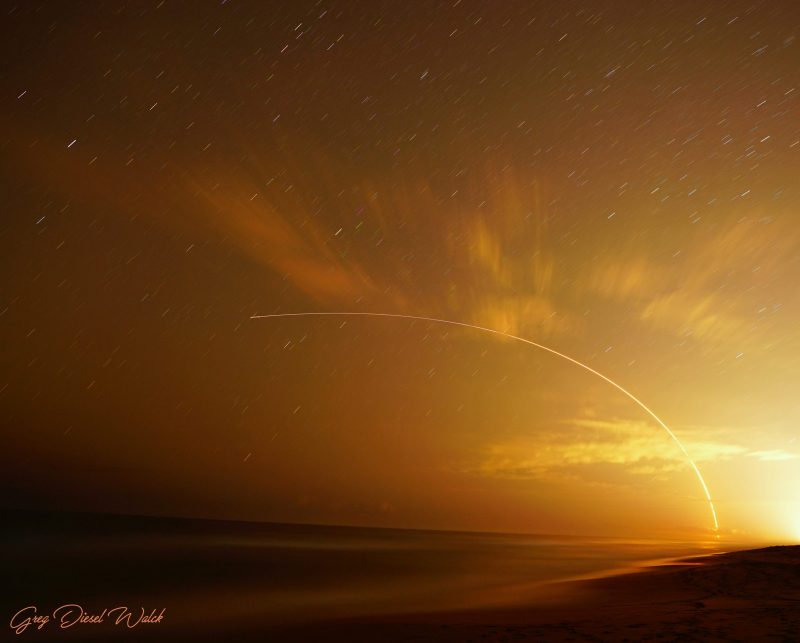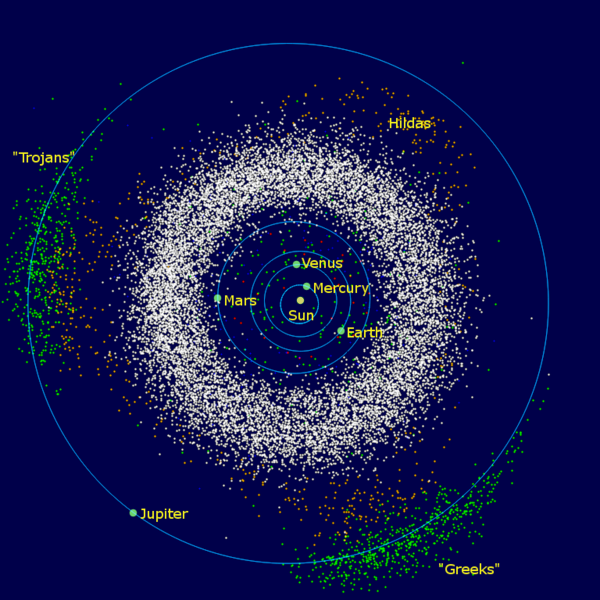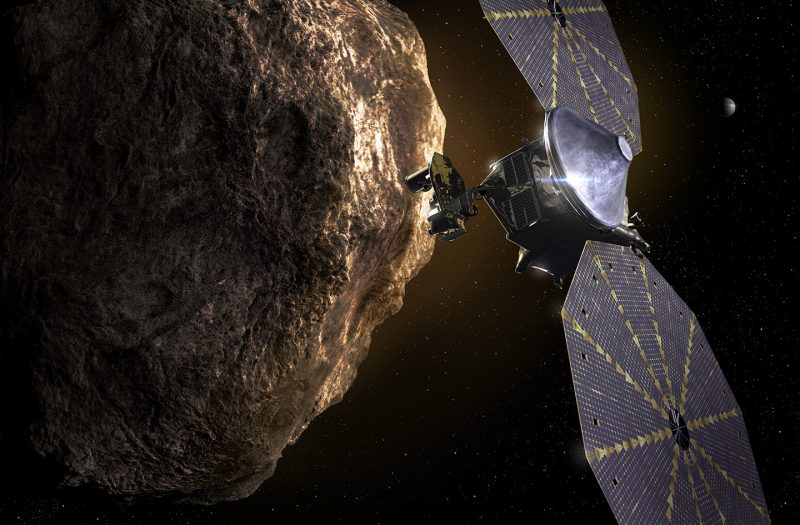Lucy sees its next target
The Lucy spacecraft – named for a famous fossilized skeleton found in Africa in 1974 – is on a 4-billion-mile (6-billion-km) journey to explore a couple main-belt asteroids and seven of Jupiter’s Trojan asteroids. And now, it has the main-belt asteroid Donaldjohanson in sight. On February 25, 2025, NASA shared Lucy’s view of Donaldjohanson. In the images, we can see the asteroid change its position between February 20 and 22.
Soon, Lucy will pass asteroid Donaldjohanson on April 20. It’s a test run for its encounter with Jupiter’s Trojan asteroids in 2027. Donaldjohanson is about 2 miles (3.2 km) wide. Lucy will get within 596 miles (960 km) of the asteroid. Lucy already passed and imaged another main-belt asteroid – Dinkinesh – in November 2023. During that pass, images revealed it has a contact-binary moon, Selam. Who knows what images of Donaldjohanson will reveal?
Earth gave the Lucy spacecraft a boost
Lucy launched from Cape Canaveral, Florida, on October 16, 2021. Exactly one year later, the spacecraft swung past Earth for a gravity assist on Sunday, October 16, 2022. During the 2022 gravity assist, Lucy swept within 219 miles (352 km) of Earth’s surface. In fact, Lucy came so close to Earth that some lucky observers were able to watch the spacecraft soar overhead.
It was the first of three gravity assists from Earth, as the spacecraft winds its way outward through the solar system on its 12-year journey.
Why visit the Trojan asteroids?
Notably, the Trojans move in Jupiter’s orbit around the sun. And, since they’ve never been explored before, scientists view them as fossils left over from the formation of the solar system.
With this in mind, our fossilized ancestor called Lucy dates to some 3.2 million years ago. And the skeleton of the fossil Lucy provided unique insight into human evolution. Likewise, the Lucy space mission will hopefully provide insight into our solar system’s evolution. Astronomer Hal Levison of the Southwest Research Institute (SwRI) in Boulder, Colorado, leads the Lucy mission. He spoke about Lucy’s journey to Jupiter’s Trojans and about how the mission got its name:
The Trojan asteroids are leftovers from the early days of our solar system, effectively fossils of the planet formation process. They hold vital clues to deciphering the history of our solar system. The Lucy spacecraft, like the human ancestor fossil for which it is named, will revolutionize the understanding of our origins.
Meanwhile, the asteroid Donaldjohnanson is named for anthropologist Donald Johanson. He discovered the fossilized skeleton of Lucy in Africa.
The Lucy spacecraft’s long journey
Ultimately, Lucy’s 4-billion-mile journey will take it out to the orbit of Jupiter and the realm of Trojan asteroids, then back in toward Earth for gravity assists three times. Indeed, this will be the first time a spacecraft has ever returned to Earth’s vicinity from the outer solar system.

To answer some questions: the Lucy spacecraft is going out to several asteroids that share a very stable orbit around the Sun with the planet Jupiter. These asteroids are not coming to Earth! Follow @AsteroidWatch
for more about how we track asteroids near Earth.— NASA Solar System (@NASASolarSystem) October 16, 2021

The Lucy spacecraft target: Trojan asteroids
To be sure, Trojan asteroids are a unique group of rocky bodies. Left over from the formation of the solar system, they orbit the sun on either side of Jupiter. Until now, no spacecraft has previously explored this collection of solar system fossils. Jupiter’s gravity, in effect, traps these asteroids in two swarms in its orbit, with some ahead of the planet and some trailing behind.
Given these points, deputy principal investigator Cathy Olkin said:
Lucy’s ability to fly by so many targets means that we will not only get the first up-close look at this unexplored population, but we will also be able to study why these asteroids appear so different. The mission will provide an unparalleled glimpse into the formation of our solar system, helping us understand the evolution of the planetary system as a whole.

Bottom line: The Lucy spacecraft is on its way to Jupiter’s Trojan asteroids. But on its way, it will have a rendezvous with the main-belt asteroid Donaldjohanson. See the first image of Donaldjohanson here.
Read more about the Lucy mission
Check out the maps on this page for more info on how to see Lucy
Source link
Read More
thesportsocean
Read our previous article: Perseverance Takes A Second Look At Some Ancient Rocks
